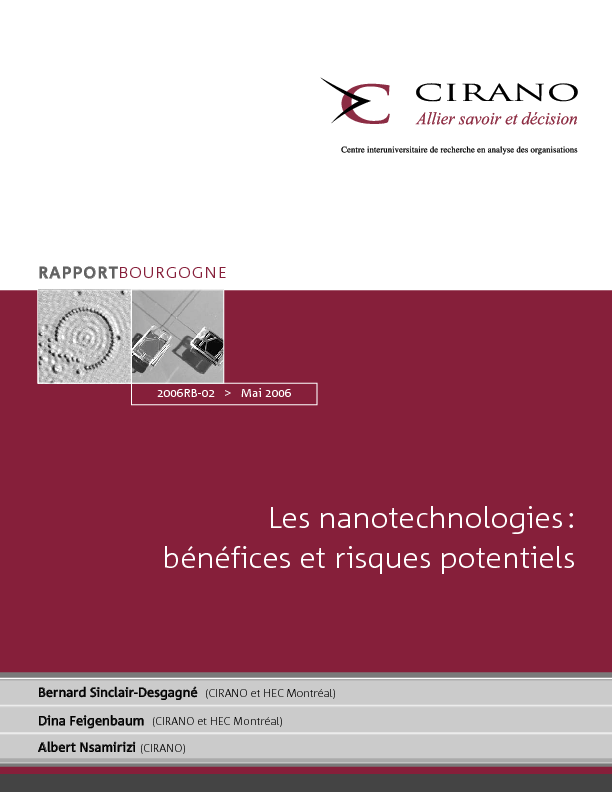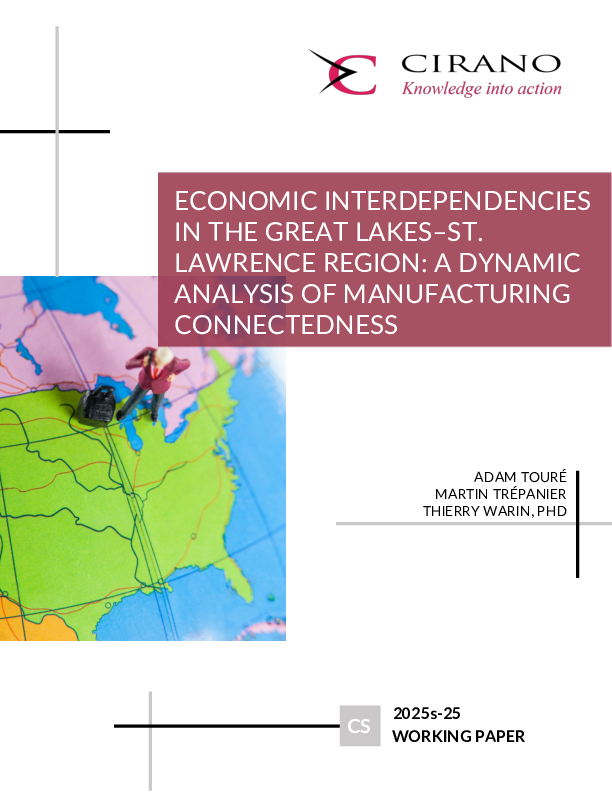Les nanotechnologies: bénéfices et risques potentiels
This CIRANO report is an introduction to the issues of nanotechnology. The aim is to provide an overview of the issue, to define what nanotechnology is, to assess its scope in terms of applications, to know the main actors and to be able to get an idea of the potential dangers that this dynamic field could entail. However, this text is far from being a complete report on the issue, as it is so vast and expanding.
Nanotechnologies are likely to be the lifeblood of the next technological revolution. Emerging since the late 1990s, their breakthroughs will revolutionize all technological and scientific fields. Nanotechnologies and nanosciences have the scientific particularity compared to the other fields they operate in at nanometric dimensions, where the material being manipulated has new properties that have not yet been used. On the other hand, the success of research in the field of nanotechnologies can only result from the convergence of the efforts of several actors operating in different scientific and technological disciplines (computer science, mathematics, engineering, chemistry, physics, biology, etc.).
The various applications in nanotechnology can be grouped into three main fields: nanomaterials, nanoelectronics and nanobiotechnologies.
Nanomaterials represent the most promising application area for short-term commercialization. By acting directly on the assembly of particles forming certain conventional materials, we are able to considerably improve their physical properties (such as strength or conductivity).
In nanoelectronics, the miniaturization limitations of conventional photolithography techniques will soon be overcome by a series of new techniques, some more promising than others. The transformations in electronics that will result from these breakthroughs will be radical (nanorobots, bionics, etc.). Nanotechnologies finally hold many promises for human health. They will allow us to observe nature more closely (from within the cells themselves) in order to correct its dysfunctions (such as nanobots acting in our arteries as plumbers capable of preventing clogging of the ducts by destroying cholesterol).
However, there are less pink aspects to any new product. As the state of progress of nanosciences and nanotechnologies does not yet allow us to know them and to properly assess the dangers, the current trend is to minimize them, given the extent of the applications envisaged. However, the problem is increasingly being raised in the scientific community. In terms of the environment, the potential risks would be linked to the fact that the market will be able to put into circulation nanomaterials with beneficial properties, but whose counterpart would be the absence of tested and approved recycling techniques. The production and storage of new materials are also subject to risk, given the increased reactivity of some of them. In the field of health, some risk analyses have been carried out. The main difficulty with this type of study is that the great diversity of nanomaterials already in existence means that there will be no uniform diagnosis. Laboratory tests have been carried out on rats to assess the health effects of carbon nanotubes, and the conclusions are not unanimous. There is therefore still a lot of work to be done. In any case, it can already be anticipated that the analysis of the environmental and human health impacts of nanoproducts will have to be based on a holistic approach that takes into account the entire life cycle of the product or process.
In short, nanotechnologies are a radical innovation that will eventually transform many aspects of economic life, and could help pave the way for sustainable development. However, there is a need to improve rapidly the risk analysis of these technologies in order to avoid pitfalls similar to those that still hinder the development of some other technologies (e.g. those resulting from genetic engineering).




